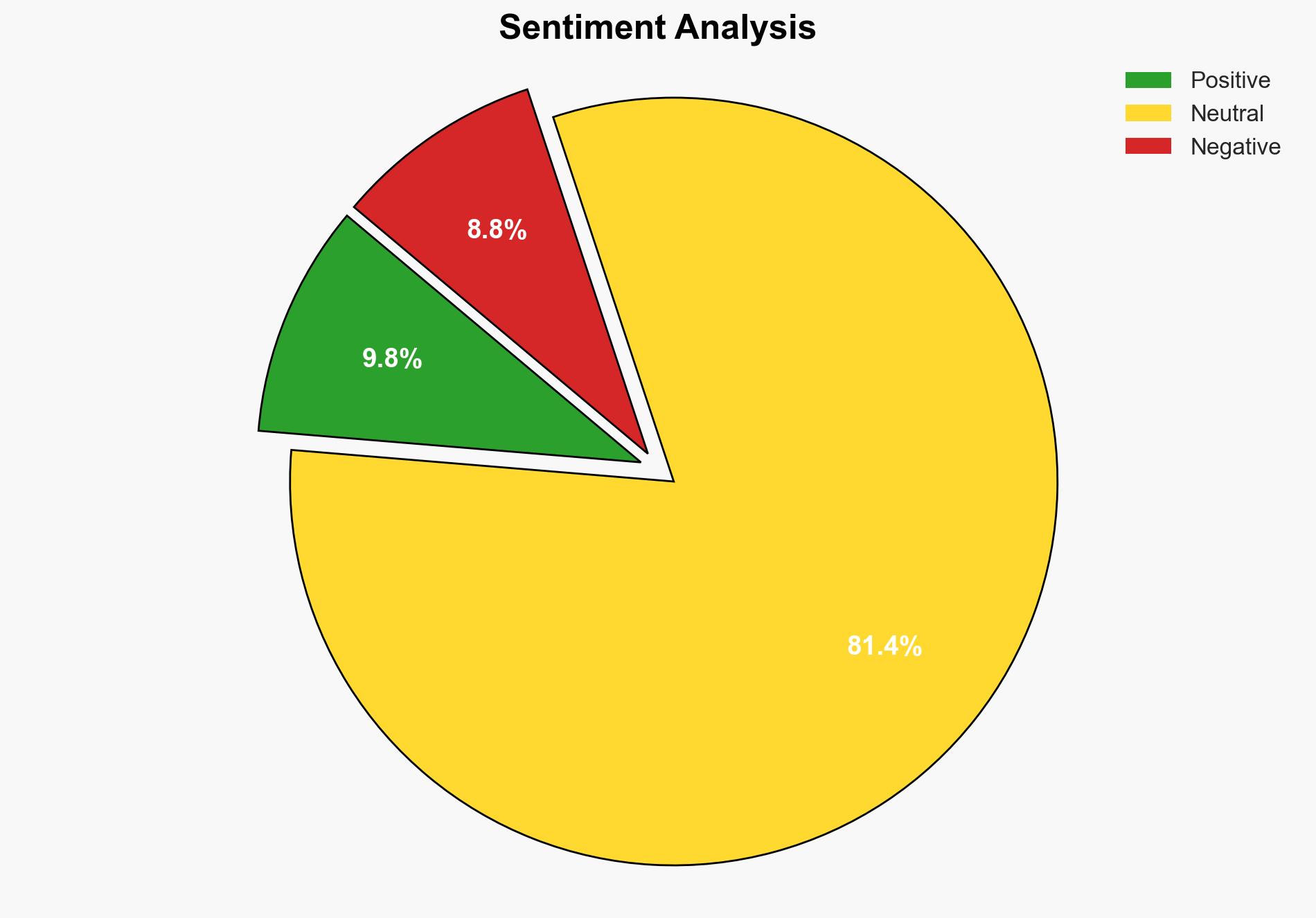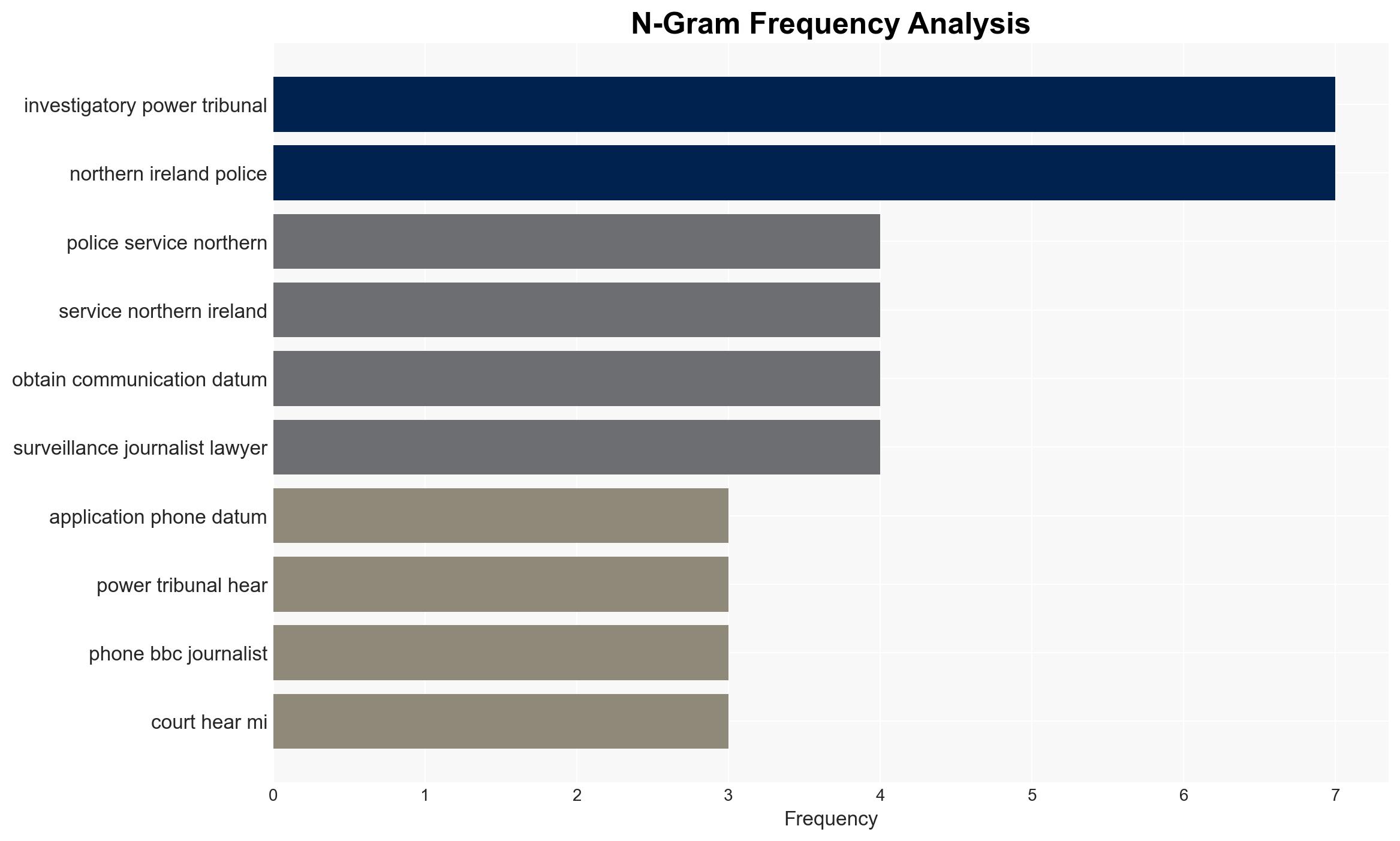MI5 made multiple applications for phone data to identify BBC journalists sources – ComputerWeekly.com
Published on: 2025-11-14
AI-powered OSINT brief from verified open sources. Automated NLP signal extraction with human verification. See our Methodology and Why WorldWideWatchers.
Intelligence Report: MI5 made multiple applications for phone data to identify BBC journalists sources – ComputerWeekly.com
1. BLUF (Bottom Line Up Front)
MI5’s actions in seeking phone data of BBC journalists, particularly Vincent Kearney, raise significant concerns about the balance between national security and press freedom. The most supported hypothesis is that MI5’s actions were driven by a perceived national security threat, albeit with potential overreach. Confidence level in this hypothesis is moderate due to the lack of transparency and potential legal implications. Recommended actions include a comprehensive review of MI5’s data acquisition processes and increased oversight to ensure alignment with legal standards and protection of journalistic sources.
2. Competing Hypotheses
Hypothesis 1: MI5’s applications for phone data were motivated by legitimate national security concerns, specifically related to unauthorized disclosures that could threaten national security.
Hypothesis 2: MI5’s actions represent an overreach and misuse of surveillance powers, aimed at identifying journalistic sources without sufficient justification, potentially infringing on press freedom.
Hypothesis 1 is more likely due to MI5’s mandate to protect national security and the invocation of the “neither confirm nor deny” (NCND) policy, suggesting a genuine security concern. However, the repeated and unauthorized nature of the applications introduces uncertainty and lends some credence to Hypothesis 2.
3. Key Assumptions and Red Flags
Assumptions: It is assumed that MI5’s actions were primarily driven by national security concerns. It is also assumed that the legal framework governing MI5’s operations is robust but may have been misapplied or circumvented.
Red Flags: The unauthorized and sequential nature of the applications, as well as the lack of transparency in MI5’s operations, are significant red flags. The potential for misuse of the NCND policy to avoid accountability is also concerning.
4. Implications and Strategic Risks
The situation poses risks to the credibility of MI5 and could lead to a public backlash against perceived overreach. There is a potential for political fallout, particularly if the actions are seen as infringing on press freedom. This could escalate into broader debates about surveillance powers and their limits, impacting public trust in intelligence agencies. Additionally, there is a risk of cyber and informational threats if sensitive information is mishandled or leaked.
5. Recommendations and Outlook
- Conduct an independent review of MI5’s data acquisition practices to ensure compliance with legal standards and protection of journalistic sources.
- Enhance oversight mechanisms to prevent unauthorized surveillance activities.
- Engage in dialogue with media organizations to rebuild trust and establish clear guidelines for future interactions.
- Best-case scenario: Enhanced oversight leads to improved transparency and trust between intelligence agencies and the media.
- Worst-case scenario: Continued surveillance overreach results in legal challenges and erosion of public trust in intelligence operations.
- Most-likely scenario: Incremental improvements in oversight and transparency, with ongoing tensions between national security and press freedom.
6. Key Individuals and Entities
Vincent Kearney, BBC journalist; Jude Bunting KC, representing BBC and Kearney; MI5; BBC; Investigatory Powers Tribunal.
7. Thematic Tags
National Security Threats
Structured Analytic Techniques Applied
- Cognitive Bias Stress Test: Expose and correct potential biases in assessments through red-teaming and structured challenge.
- Bayesian Scenario Modeling: Use probabilistic forecasting for conflict trajectories or escalation likelihood.
- Network Influence Mapping: Map relationships between state and non-state actors for impact estimation.
Explore more:
National Security Threats Briefs ·
Daily Summary ·
Methodology





